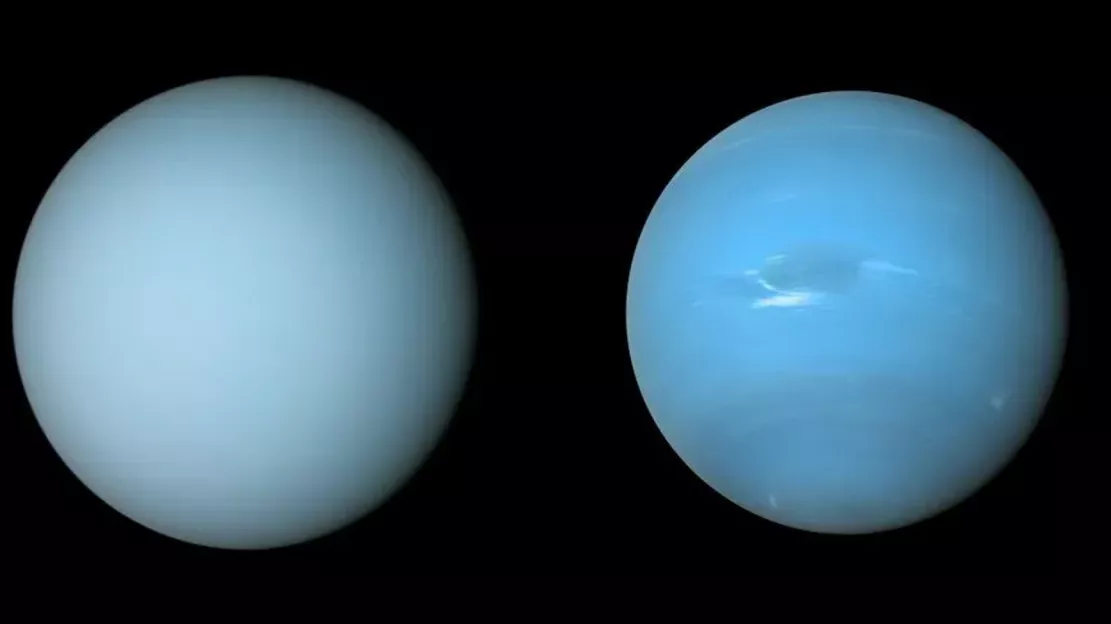Both Uranus and Neptune have blue, but Uranus has less blue than its solar system neighbor An international research team investigated the atmospheres of the two ice giants, which should look like twins, and found out why they wore different blue colors

In visible light (which we humans see), Neptune's blue is more intense than Uranus. Strangely, these planets are very similar in size, mass, and gas in their atmospheres. So why are they different in color?
The paper published in the Journal of geophysical research by Patrick Irwin, Professor of planetary physics at Oxford University, and others last week answered the question about planetary hue.
The team used data from the Hubble Space Telescope, NASA's infrared telescope facility and the Gemini northern telescope to simulate the planet's atmosphere, which contains three layers of aerosols at different heights. Oxford University said in a statement on Tuesday: "it is found that the middle layer of haze particles on Uranus is above the methane condensation level, which is thicker than the haze particles on Neptune, which affects the visible color of the two planets." Irwin says this is the first model to explain color differences.
The atmospheres of these cold, gaseous planets are made up of hydrogen, helium, and methane. Methane ice condenses in the planet's mesosphere to form methane snow.
The University said: "Neptune has a more active and turbulent atmosphere than Uranus, which shows that Neptune's atmosphere can more effectively agitate gaseous methane into the haze layer, where it can condense on the haze particles and produce this kind of snow." This intense activity thins Neptune's haze layer, making the planet look darker and bluer. On the other hand, Uranus' atmosphere is described as stagnant, so it builds a thicker layer, giving it a more bleached appearance.
"We hope to develop this model to help us understand the clouds and fog in the atmosphere of ice giants," said Mike Wong, a planetary scientist and co-author of the study at the University of California, Berkeley. "Explaining the color difference between Uranus and Neptune is an unexpected gain!"